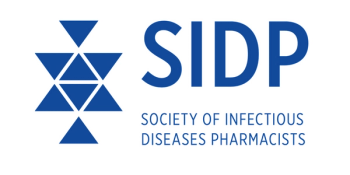
Meta-Analysis Characterizes Complications of COVID-19 in Pregnancy
Review and meta-analysis identifies clinical manifestations, risk factors, and maternal and perinatal outcomes associated with COVID-19 in pregnancy.
Symptoms and sequelae of COVID-19 in pregnancy, as in the general population, are likely to be worse with increased patient age, high body mass index and pre-existing comorbidities, according to a systematic
With rapidly emerging information about the interface of COVID-19 and pregnancy, the investigators anticipate that this will be a "living" review, with updates possible for up to two years from the initial publication.
"Quantification of the rates of COVID-19, its risk factors, clinical manifestations, and outcomes is key to planning clinical maternal care and management in an evolving pandemic scenario," indicate Shakila Thangaratinam, MD, PhD, WHO Collaborating Centre for Global Women's Health, Institute of Metabolism and Systems Research, University of Birmingham, Birmingham, UK, and colleagues.
The investigators included 77 cohort studies in the analysis. Most were conducted in the US (26) and China (24), with the remainder from across the globe. The investigators note that the types of studies have shifted with the spread of the pandemic, not only by country, but also from the initial small case series and case reports, to large observational studies, with the most recent providing comparative data.
The overall rate of COVID-19 diagnoses in 11432 pregnant women attending or admitted to hospital for any reason was 10% (95% CI, 7-14). Thangaratinam and colleagues suspect that the true prevalence of COVID-19 is likely to be lower in the larger population of pregnant women.
The most common symptoms in pregnant women with COVID-19 were fever (40%) and cough (39%); and the most common laboratory abnormalities were lymphopenia (35%) and elevated C-reactive protein level (49%). Pregnant women with COVID-19 were less likely than non-pregnant women, however, to manifest symptoms of fever, or myalgia. Increasing age and high body mass index were associated with greater risk for more severe symptoms, as were pre-existing hypertension and diabetes.
In comparison to non-pregnant women with COVID-19, pregnant women with the disease had higher odds of admission to the intensive care unit (1.62, 95% PI 1.33-1.96) and need for invasive ventilation (1.88, 1.36-2.60). A pre-existing maternal comorbidity further increased odds of requiring intensive care (4.21, 1.06-16.72) and for invasive ventilation (4.48, 1.40-14.37).
Pregnant women with COVID-19 had an overall preterm birth rate of 17% (13-21), and 6% (3-9) rate of spontaneous preterm births. The odds of any preterm birth were higher with COVID-19 than without (3.0, 1.15-7.85). There were no statistically significant differences in other maternal outcomes between those with or without COVID-19; or in neonatal outcomes, other than neonatal unit admissions.
"Further data are needed to assess robustly if pregnancy related maternal and neonatal complications are increased in women with COVID-19 than those without the disease," Thangaratinam and colleagues indicate.
The investigators found fewer pregnant women with COVID-19 than non-pregnant with the disease presented with the cluster of respiratory symptoms of cough, fever, and breathlessness associated with the disease, and suggest this might reflect their higher rate of asymptomatic presentation.
"Based on existing data, healthcare professionals should be aware that pregnant and recently pregnant women with COVID-19 might manifest fewer symptoms than the general population, with the overall pattern similar to that of the general population," they advise.
Newsletter
Stay ahead of emerging infectious disease threats with expert insights and breaking research. Subscribe now to get updates delivered straight to your inbox.






























































































































































































































































































